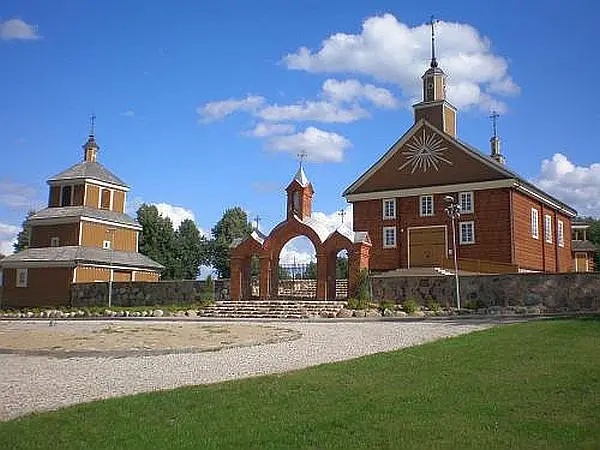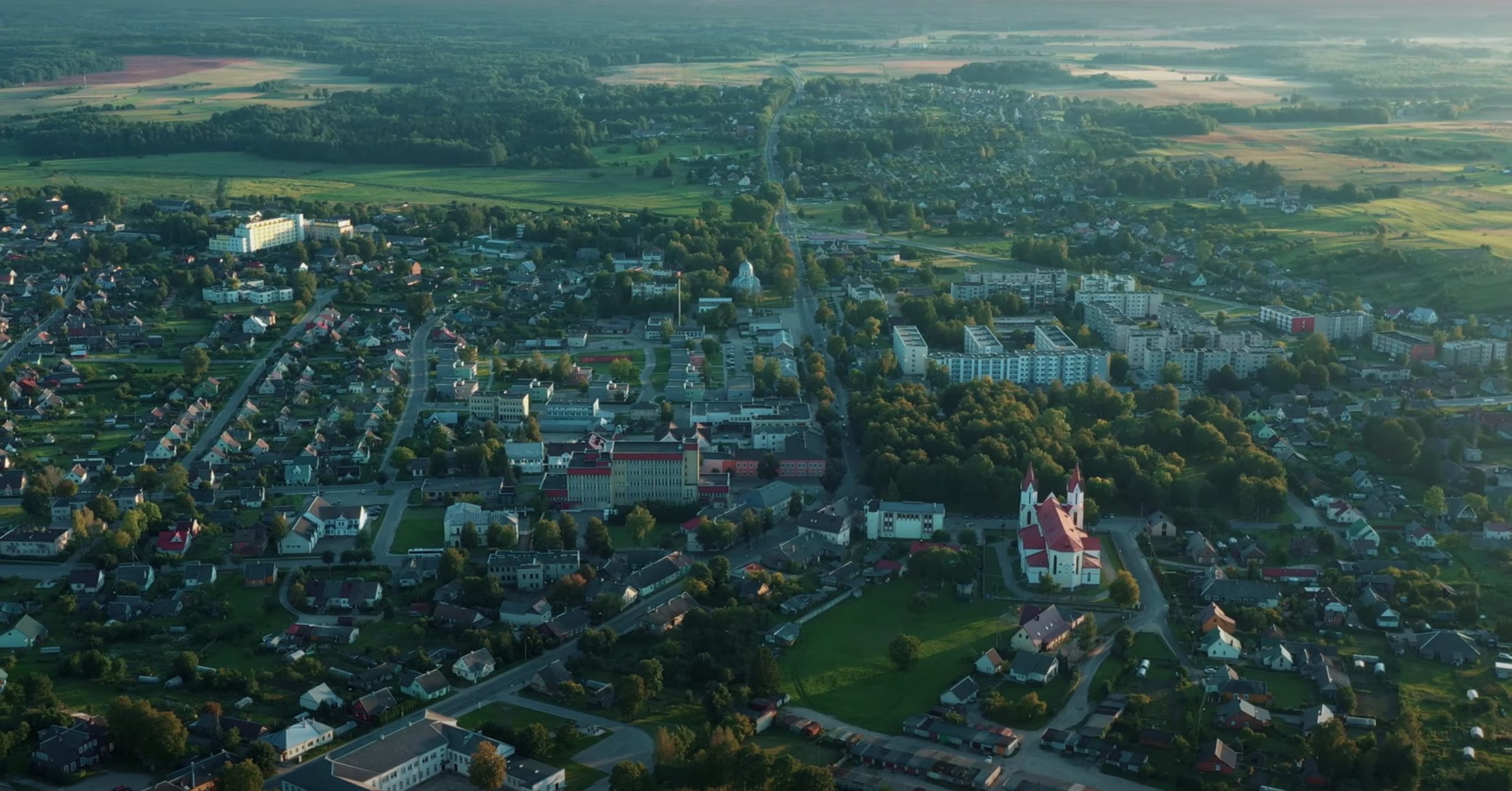
Labanoras is a small town located 37 km from Švenčionys, formerly a church village, surrounded by the beautiful Labanoras forest, located between forests and lakes in the Labanoras Regional Park. The town is located at the intersection of Molėtai-Kaltanėnai and Saldutiškis-Joniškis roads, in the middle of the forest, 30 km southeast of Utena. The Peršokšna tributary Labanoras flows through Labanoras, Lake Labanoras is located in the east of the town, and Lake Dumblis in the north-west. There is a campsite near the town. The belfry is still standing, there is a library (since 1952), post office (LT-18025), hotel-restaurant “Labanoras”.
The town is changing – good roads with Kaltanėnai, Molėtai. It is interesting to look around the unique town of Labanoras, to see the courtyards with well-preserved traditional buildings, barns, and rafters. There is a belfry, as well as the surviving outbuildings of the former rectory – valuable monuments of folk architecture. The instrument of national music is the Labanoras bagpipe.
The town is connected with Molėtai, Kaltanėnai and Švenčionėliai.
2.5 km southwest of Labanoros is a natural monument – the Pine queen.
Labanoras is an old settlement first mentioned in the second half of the 14th century. In 1387, when Lithuania was baptized and the diocese of Vilnius was being established, the Chief Duke of Lithuania Jogaila presented Labanoras to the bishops of Vilnius, who remained in power until the 19th century. The church is first mentioned in the 16th century (it became the center of the parish in about 1767). 1595-1597 a town appears. Legal dependence as well as geographical location (in the woods, away from important trade routes) prevented the settlement from growing into a larger city.
The town of Labanoras became the administrative center in 2001, when Labanoras eldership was established. On the 12th of January, 2011 the coat of arms of Labanoras was approved by the decree of the President of the Republic of Lithuania.
In 2009 probably the most important architectural accent of the town burned down before Christmas – The Church of the Virgin Mary, built in 1820 with the funds of the parishioners. The church is being rebuilt quickly. In addition to the funds allocated by the state and Švenčionys district municipality, the Lithuanian population has donated and is still donating for its reconstruction. Labanoras belfry has survived – a monument of folk architecture that was built in the 18th-19th centuries. The town is famous for Labanoras horn, or Labanoras bagpipe. Every year in early September there is a church mass to celebrate the birth of Virgin Mary. In this occasion the eldership organizes the famous Labanoras Fair, during which a market takes place, and famous performers give concerts.
The paintings made from the nails of burnt Labanoras church are reminiscent of a painful calamity.
Labanoras has long been cut off from other areas by its inaccessible forests, which has preserved its unique way of life and customs. Its first inhabitants were engaged in hunting, beekeeping and fishing. That is why even now in the villages one can find small log huts, baths on the shores of clean lakes and streams, huge barns with sloping roofs, graceful yawns for drying hay and wise people like old forest trees.
Contacts:
Labanoras, LT-18235
Seniūnijos Str. 27, Švencionys district,
Tel. (8 387) 41 409
Fax. (8 387) 41 409
Email: labanoras@svencionys.lt
Elder of Labanoras:
Vincas Jusys
Tel. +370 682 10826
Email: V.Jusys@svencionys.lt

